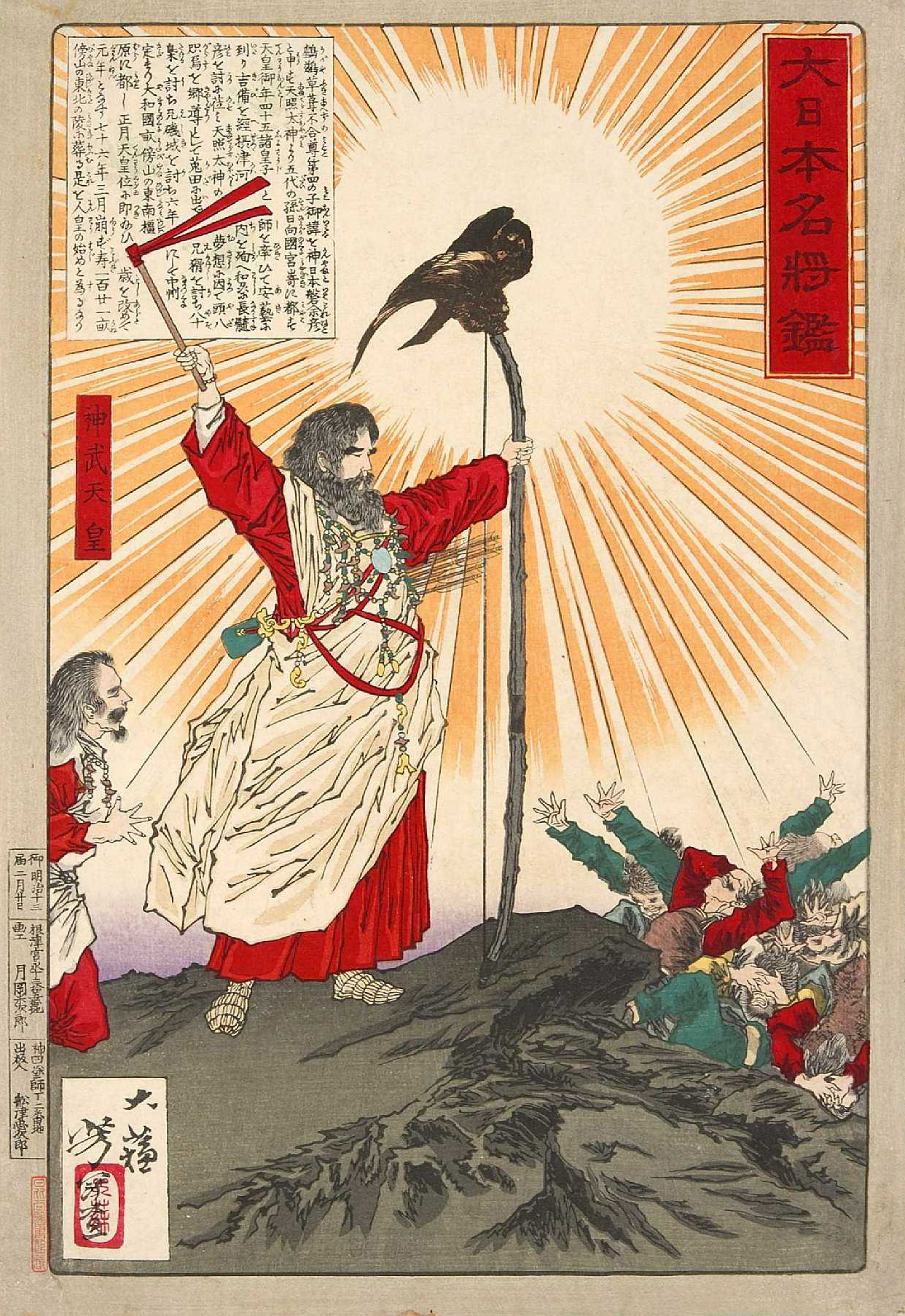February 11 was National Foundation Day (建国記念の日; kenkoku kinen no hi), one of the 16 national holidays in Japan, commemorating Japan’s founding as a nation. And yet, you’ve likely never heard of this holiday. In fact, when asked “When is National Foundation Day?”, only 19.3% of Japanese citizens could identify the correct date, according to a survey conducted by the conservative Junior Chamber International Japan in 2015[1].
For most, the holiday is just a day off and a pleasant surprise. For others, it is a patriotic holiday to celebrate one’s love of Japan. And for still others, it is a holiday to protest. So what makes National Foundation Day so controversial yet easily forgotten?
Table of Contents
ToggleThe “Founding” of a Nation

According to the Nihon Shoki (日本書紀), one of the oldest texts on Japanese history, Japan was founded when Emperor Jimmu acceded the throne in 660 BCE, on the first day of the first lunar month. However, this is no historical evidence that Emperor Jimmu existed. Historians believe that both the year and date were chosen arbitrarily because they were auspicious.
In 1872, following the Meiji Restoration, the government announced a yearly festival on January 29 to celebrate Emperor Jimmu’s ascension to the throne, coinciding with the lunar new year. After its first celebration in 1873, the government changed the date to February 11 and gave it a new name: Kigensetsu (“Festival for the Origin of the Era”), sometimes referred to as Empire Day in English.
Before the Meiji era, people were generally more loyal to their regional lords (daimyo) than to the emperor. They also worshipped local deities (kami). Kigensetsu served to unite the people under the emperor and cement his legitimacy to rule the nation. Furthermore, Emperor Jimmu was said to be descended from the sun goddess Amaterasu, so the emperor, too, was divine.
From Kigensetsu to National Foundation Day
Kigensetsu was one of the largest festivals in its day. Towns across the nation held parades and festivals to pay respects to the emperor. Schools held ceremonies where children saluted the Rising Sun flag. People all over sang the Kigensetsu song, which ends like so:
Planning a trip to Japan? Get an authentic, interpreted experience from Unseen Japan Tours and see a side of the country others miss!

"Noah [at Unseen Japan] put together an itinerary that didn’t lock us in and we could travel at our own pace. In Tokyo, he guided us personally on a walking tour. Overall, he made our Japan trip an experience not to forget." - Kate and Simon S., Australia


Keep all you devices connected in Japan - rent a pocket wifi device! Available for hotel pickup or delivered to your airport. Fast speeds and backed by excellent customer service. (Note: Affiliate link - Unseen Japan earns a commission if you make a purchase.)
The Land of the Rising Sun shining in the sky
Is the best country in the world.
The main pillar of our country is the Emperor.
We revere the Imperial Reign with happiness.
Translation from Japan’s Multilayered Democracy, “Feburary 11, 1889: The Birth of Modern Japan,” by Lionel Babicz.
Following Japan’s defeat in World War II, the occupation forces abolished Kigensetsu and other nationalist holidays in 1948.
Many were upset about the holiday’s removal. After the Allied occupation of Japan ended in 1952, legislators lobbied to reinstate it. The Diet of Japan rejected nine bills to establish Kenkoku Kinenbi (建国記念日, “Anniversary of the Nation’s Founding”). Finally, after many amendments, the government established Kenkoku Kinen no Hi (建国記念の日, “Day to Commemorate the Nation’s Founding”) as a national holiday. The renaming was a compromise to de-emphasize the date itself while still celebrating the founding of Japan. This is the day that we now know as National Foundation Day.
National Foundation Day Today
According to Article Two of the Act on National Holidays, National Foundation Day is a day to “reminisce the founding of the nation and foster a love for the country” (建国をしのび、国を愛する心を養う). However, unlike its predecessor Kigensetsu, there are no official celebrations for National Foundation Day. Some shrines, especially those with connections to past emperors, still hold a festival called the Kigensai on February 11. These include Meiji Shrine (Tokyo), Kamigamo Shrine (Kyoto), and Kashihara Shrine (Nara)[2].
Every year across the nation, there are also meetings celebrating National Foundation Day, as well as meetings opposing it. In the former, attendees sing the national anthem Kimigayo (君が代; “His Imperial Majesty’s Reign”) and salute the emperor by saying Tennouheika Banzai (天皇陛下万歳; “Long live His Majesty the Emperor”). At one such meeting this year in Naha, Okinawa, Liberal Democratic Party Representative Kokuba Kounosuke gave a speech emphasizing the importance of National Foundation Day: “By celebrating every historical festivity like this one, we are continuing Japan’s long history.”
The Opposition
On the other hand, meetings opposing the holiday eschew patriotism. Speakers at these meetings criticize the nationalistic roots of National Foundation Day. Some even march through the streets in protest. Historian Chadani Seiichi said at a meeting this year in Kagoshima, “Reverence of the emperor is deeply ingrained into Japan. We cannot ignore how conservatives have exploited this for their political gain in the post-war era. We as a people must push back against this.”[3]
However, these gatherings attract hundreds of attendees each, sometimes less, suggesting that the vast majority of Japanese citizens do not feel strongly about the holiday. Many in Japan avoid overt displays of patriotism, even on National Foundation Day. Some will fly the Japanese flag outside their homes, but in some neighborhoods, this is frowned upon as too nationalistic. For many, National Foundation Day is just another day off.
What to Read Next
Holidays in Japan: The Complete Guide
Sources
[1] (Link no longer active)
[2] 建国記念の日 賛否で集会. QAB
[3] (Link no longer active)
